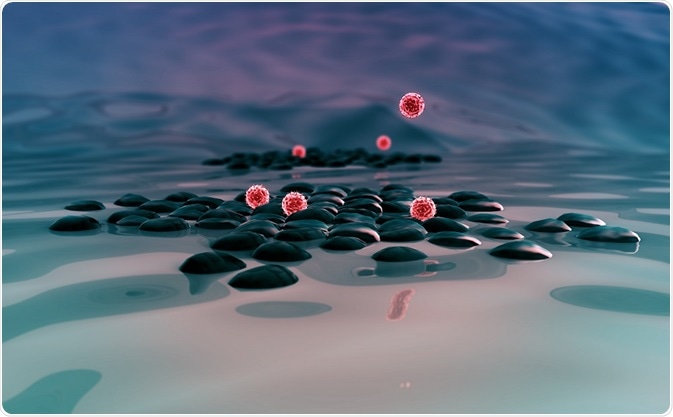Insulin-like growth factors (IGFs) are peptide hormones that are primarily involved in stimulating the growth of many types of cells. They participate in the growth and function of almost every organ in the body, and are also partially capable of reducing blood glucose levels.

Credit: URGREEN3S/Shutterstock.com
The name “insulin-like growth factor” reflects the fact that these hormones are structurally related to insulin and can even bind to the insulin receptor, although at a lower affinity than insulin. IGFs are far less effective at decreasing blood glucose levels than insulin.
Although IGFs are mainly produced in the liver as endocrine hormones, they are also produced in many other tissues, where they exert paracrine (acting on nearby cells) and autocrine (self-stimulating) effects.
There are two forms of insulin-like growth factor: IGF-1 and IGF-2. Both are released when stimulated by growth hormone and their production may be decreased by growth hormone insensitivity or a lack of GH receptors. Malnutrition can also lead to IGF deficiency.
IGF-1
IGF-1 consists of a single chain of 70 amino acids with three intramolecular disulfide bridges and has a molecular weight of 7,649 Daltons. Most of the actions of pituitary growth hormone are moderated by IGFs, mainly IGF1. Growth hormone triggers tissues to make and secrete IGF-1, which then stimulates cells to increase in size (hypertrophy) and number (hyperplasia).
IGF-1 is essential to growth during childhood and has anabolic effects in adulthood. It is produced throughout life, with the highest rate of production seen during puberty and the lowest rate seen in infancy and old age.
A synthetic analogue of IGF1 is used to treat growth failure in children who have abnormal IGF-1 synthesis, as IGF-1 is required for bone and muscle growth. IGF-1 is mainly produced in the liver and then transported in the plasma by IGF-binding proteins (IGFBPs). These binding proteins are responsible for keeping plasma IGF-1 levels relatively high and minimizing fluctuations in plasma concentrations. About 98% of IGF-1 is bound to one of six IGFBPs, with the most abundant one being IGFBP3, which binds 80% of all IGFs.
Measurements of IGF-1 and growth hormone secretion are used in the diagnosis of growth disorders. Patients with acromegaly (excess tissue growth) consistently have a raised IGF-1 level. The measurement of IGF-1 in conjunction with growth hormone assessment can also be used in the investigation of short stature to establish the cause of retarded growth.
IGF-2
IGF-2 is 67-amino acid peptide with a molecular weight of 7.5 kilodaltons that mediates some of the actions of GH. It is structurally homologous to IGF-1 and is thought to exert paracrine effects. IGF-2 is also found in the peripheral circulation where it forms a complex with IGFBP3. The synthesis of IGF2 is much less dependent on GH secretion than IGF-1 synthesis and IGF-2 is far less significant in triggering linear growth
The actions of IGF-2 are exerted on binding to the cell surface IGF-2 receptor, although the function of this receptor is not fully understood. IGF-2 also binds with a lower affinity to the IGf-1 receptor and insulin receptor.
A healthy postnatal plasma IGF-2 level is thought to be at the maximum level, since the level does not increase when GH is administered, as is the case with IGF-1. Postnatal plasma IGF-2 increases throughout childhood and puberty. It decreases in cases of malnutrition or when GH levels are low, as well as in cases of acromegaly and when IGF-1 is administered.
IGF-2 regulates cell proliferation, growth, migration, survival and differentiation. A decreased IGf-2 level is seen in growth disorders and has also been proposed to play a role in the development of some cancers including breast cancer, colon cancer and lung cancer. In addition, IGF-2 has been implicated in cardiovascular disease where it has been shown to influence the size of atherosclerotic lesions.
Further Reading
Last Updated: Feb 26, 2019